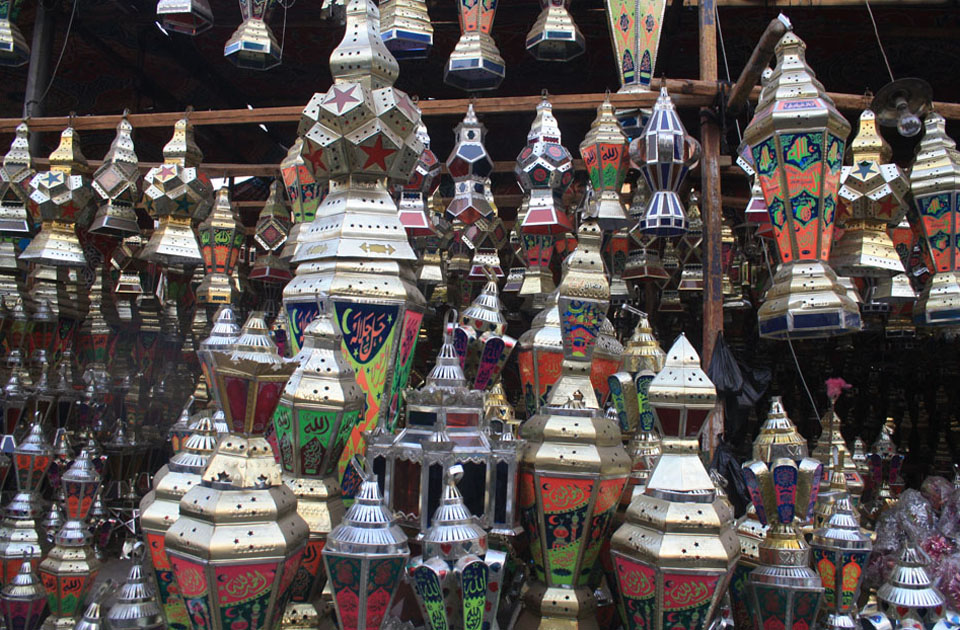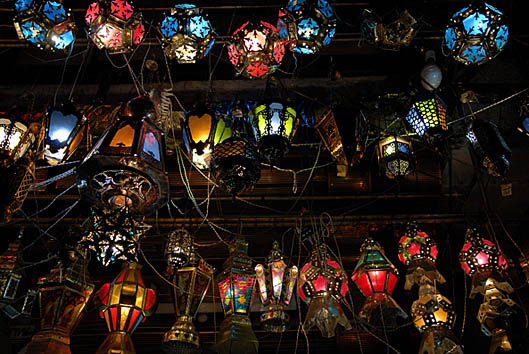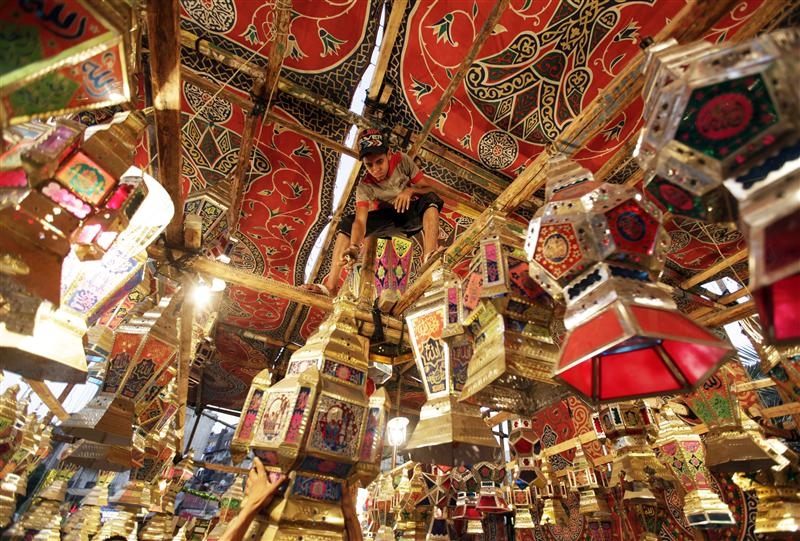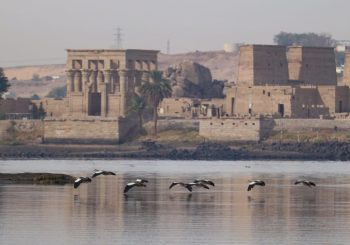Ramadan is one of the most anticipated events of the Islamic year around the world, one that bears symbols of spirituality, forgiveness, generosity and celebration. Although Muslims worldwide are united under the same practices during the Holy month, Egypt and the Arab world have taken up traditional means of celebrating it, with the ‘fanoos’ being one of the most prominent icons depicting its presence.
Although the fanoos –Arabic for lantern- is currently used as a decorative item or a toy for children to enjoy during the Holy month, a trip back in time shows that its journey started off rather differently.
Despite its common use in modern Arabic, the word fanoos originates from the Greek word φανός -pronounced almost similarly- which means lantern, or a means of illumination, portable be it or fixed.

The early tales of the fanoos’s origin may differ, but they all point to Cairo as the birthplace of the fanoos as we know it today.
The story starts a little over a thousand years ago on the 5th of Ramadan of the Hijri (lunar) year 358 (969 A.D.), when Cairenes were expecting the arrival of al-Mu’izz li-Din Allah al-Fatimy during the dark. To ensure an illuminated entrance for the Caliph, Gawhar al-Siqilli –Fatimid military commander and viceroy at the time- ordered the city residents to light the path by holding candles along the pathway. To avoid any extinguished candles, the townspeople placed their candles on wooden bases and enclosed them with palm and light skin. As the Caliph walked through town, he admired the design, and from there on, the fanoos became symbolic of Ramadan.

In another account of the tale, the families of Cairo used to accompany the Caliph along his journey across the city passing through the old gates of Cairo, Bab el-Nasr, Bab el-Fetouh and Bab el-Dahab on his way to the Mokattam hill for the Ramadan moon sighting, announcing the start of the Holy month. Along the route, kids would joyfully hold the fanoos and sing in welcoming and celebration of Ramadan.
Although the early stories of the fanoos may not be strikingly odd, others associated to the fanoos are fairly unusual.
In the 10th century A.D., Caliph el-Hakim bi-Amr Allah deprived women from departing their homes all year long. The only exception was during Ramadan when women were allowed to attend prayer outside their homes and visit relatives and neighbors. But that exception was applied under the condition that women are accompanied by boys carrying the fanoos both to light their way and to notify men that a woman is walking by.
Furthermore, an order was passed by Caliph el-Hakim bi-Amr Allah that lanterns would be installed along every alley, and in front of each shop and home. Whoever disobeyed was fined. Under such strict orders, the fanoos industry in Cairo flourished notably.

During the Fatimid era, celebrations and holidays were of remarkable importance to Egyptians, the reason why they invested a lot of time and effort preparing for them. Consequently, the fanoos industry started shifting from a utility of lighting homes, mosques and stores to a decorative item used during Ramadan.
Moreover, it spread as a tradition for children to walk the roads and alleys carrying their Fanoos and singing jolly songs while asking for gifts and candy.
At night, the mesaharaty –a person whose job is to wake people up for the predawn meal in Ramadan- would also gather children around him as they sang merrily through the neighborhood, carrying the fanoos.
Along the passage of time, more traditions combining the fanoos with Ramadan would emerge resulting in the deeply rooted link between the two, and marking them as authentic Egyptian heritage.
Slowly, the Egyptian fanoos started to trickle into neighboring countries until it became a Ramadan tradition in many of them, especially in Damascus, Aleppo, Jerusalem, Gaza and others.

In spite of the tradition being seasonal, the fanoos industry is active all year long, even in our modern times. Throughout the year, the industry innovators work on coming up with new designs and crafting them. They are then stored until shortly before Ramadan when they are gleefully put up for sale.
As the original birthplace of the fanoos, Cairo continues to uphold its pivotal role in the industry. Today’s fanoos industry hub is considered to be at Taht ElRab’ –an area close to al-Azhar. There, you can find some of the biggest fanoos workshops that have been passed down from one generation to another.

If you feel tempted and lured in by the art and the precision of its craftsmanship, don’t be reluctant to support this historical and traditional ornament which now fights against the flooding of many imported lanterns that fail to match is authenticity.







Comments (5)
[…] Ramadan Fanoos: The Brief History Of A Thousand … – The early tales of the fanoos’s origin may differ, but they all point to Cairo as the birthplace of the fanoos as we know it today. The story starts a little over a thousand years ago on the 5th of Ramadan of the Hijri (lunar) year 358 (969 A.D.), when Cairenes were expecting the arrival of al-Mu’izz li-Din Allah al-Fatimy during the dark. […]
[…] Lampu Fanoos yang beterbaran saat bulan ramadan via egyptianstreets.com […]